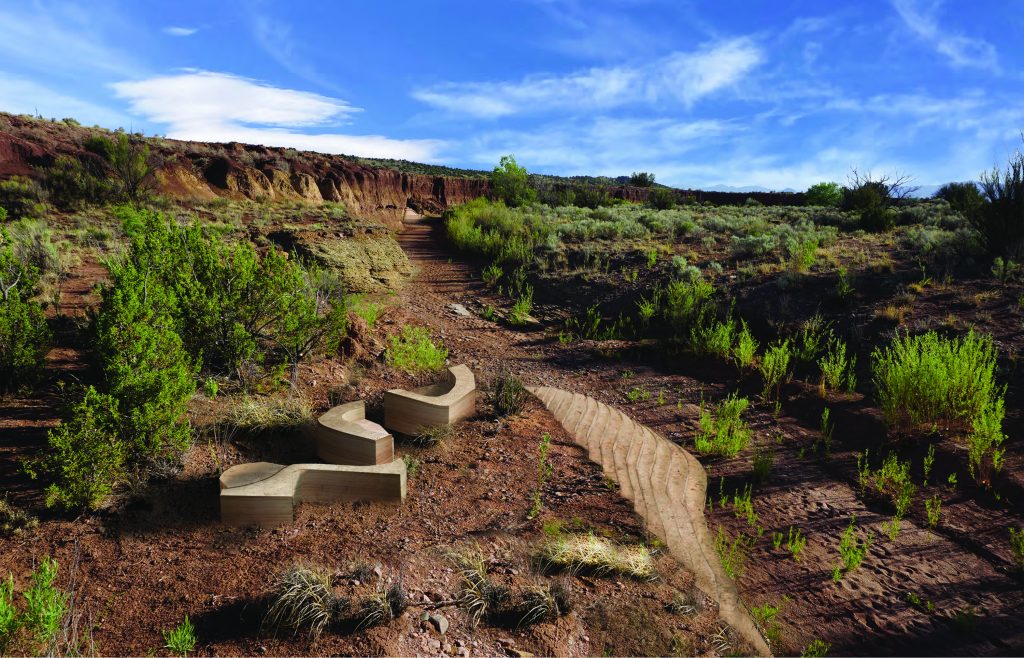
Regenerative Art can be defined as a work of art that incorporates technologies, techniques, or processes for the purpose of contributing sustainable resources such as pollution-free electricity or water to meet existing needs, or to assist in the regeneration of a landscape to increase groundcover, wildlife habitat, and biodiversity. Regenerative Art is art conceived as sustainable infrastructure or as a means of restoring natural or social ecosystems.
One of the highlights of 2022 for the Land Art Generator was the opportunity to bring an invited design competition for regenerative artworks to the gorgeous landscape of New Mexico near Galisteo. We were invited by Chip Conley and the incredible team at the Modern Elder Academy (MEA) who are stewarding a 2,566 acre parcel known as Saddleback Ranch in an exemplary way. MEA’s vision of a regenerative community is conceived holistically to include the regeneration of soil, regeneration of ecosystems and habitats, regeneration of community, and regeneration of the soul of each individual. This work is in support of MEA’s larger mission as a school dedicated to helping people navigate life transitions in midlife and beyond. Beginning in late 2023, MEA’s Saddleback Ranch campus will begin hosting workshops, building on the curriculum developed at the original campus in Baja, Mexico. MEA participants will learn from the sustainably managed equine landscape and engage with the selected artwork from the LAGI MEA design competition.
You can learn more about MEA’s vision for transforming Saddleback Ranch into a regenerative venue for learning and self-discovery here, and you can learn more about Chip Conley and the founding of MEA here (MEA’s daily blog).

The four regenerative artworks developed for the LAGI MEA invited design competition showcase the innovation that can spring from artist collaborations with nature. Each project addresses the design brief in a unique way, using different materials and techniques to create art in the landscape that is both visually striking and ecologically beneficial.
The LAGI MEA design brief asked the invited teams to create permanent, three-dimensional sculptural forms that would inspire wonder, awe, or a sense of delight in those who encounter and interact with them. The artworks were to consider their place within the surrounding ecosystem and their symbiotic relationship to native flora and fauna, in order to tell a story about the place where they exist.

Each of the proposals is exemplary of the beauty of a future where humanity achieves harmony with the natural world and environmental systems. They point the way to a cultural shift where acts of creativity are fully engaged in stewardship of nature and regeneration. The artworks generously give sustainable services to meet the needs of MEA Saddleback Ranch, including the sustainable harvest of water, support for wildlife observation and habitat, landscape regeneration, equine infrastructure, and renewable energy production.
In support of the mission of MEA, the artworks each provide interpretation and learning opportunities designed to engage people with an understanding of how the artwork functions, and even in some cases to participate in the maintenance and operation of the artworks over time.
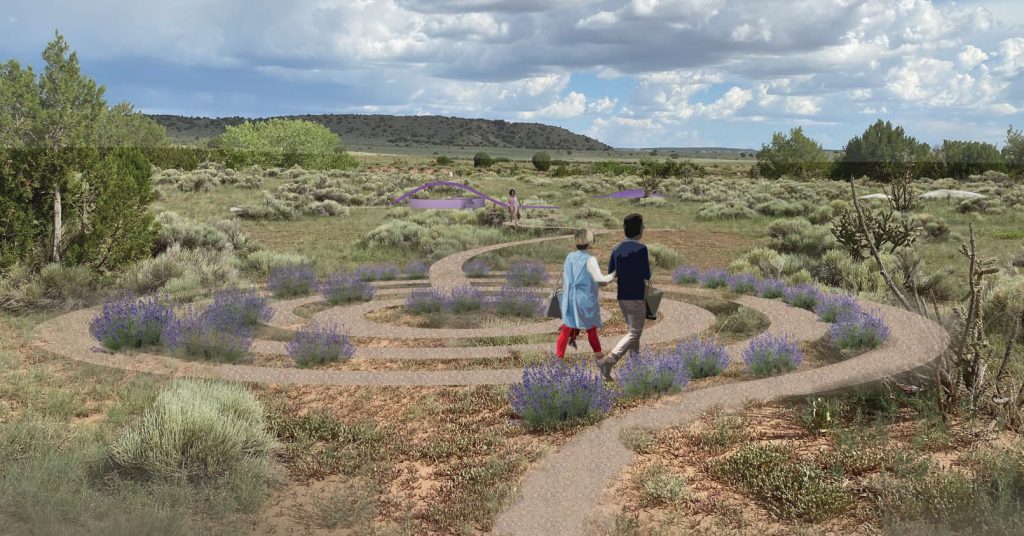
Located 20 miles southeast of Santa Fe near the small town of Galisteo, the site is on traditional land of the Tewa people, a linguistic group of Pueblo Native Americans, and is a beautiful example of American desert shrublands, home to flora native to the Galisteo Basin ecosystem like Pinon-Juniper Savannah, Pinon-Juniper Wooded Shrubland, and open grassland meadows.
North-facing slopes and outcrops that receive more concentrated precipitation also have herbaceous and woody shrub species not found on drier upland slopes. Arroyo bottoms support a limited quantity of riparian shrubs and trees where roots can take advantage of shallower groundwater. A small seep along the arroyo at the center of the site sustains enough moisture for a small community of willow and cottonwood trees.
Small mammals, reptiles and birds are evident on site and represent a typical sample of drywoodland, rocky sloped ecosystems of the Galisteo Basin. Deer Mice, Kangaroo Rats, Wood Rats, Desert Cottontail and Black-tailed Jack Rabbits provide a prey base for predators such as snakes, coyotes and raptors. Birds of prey include the Red-tailed Hawk and American Kestral and others depending on seasonal migration patterns. Smaller bird species utilizing juniper and pinon habitat include: Spotted Towhees, Rock Wrens, Black-throated Sparrows and the Mourning Dove. Antelope, bison, wild horses, deer, elk, pronghorn, sheep, and even camels (as recently as 12,000 years ago) have historically roamed this landscape.
The site has a rich history and an engaged surrounding community. For more information see the Galisteo Basin Preserve website. MEA’s goal is to operate a regenerative community. They are working with Jan Loeffler Bird, an ecological design consultant, who is developing a plan to regenerate the landscape primarily through establishing sustainable grazing practices.
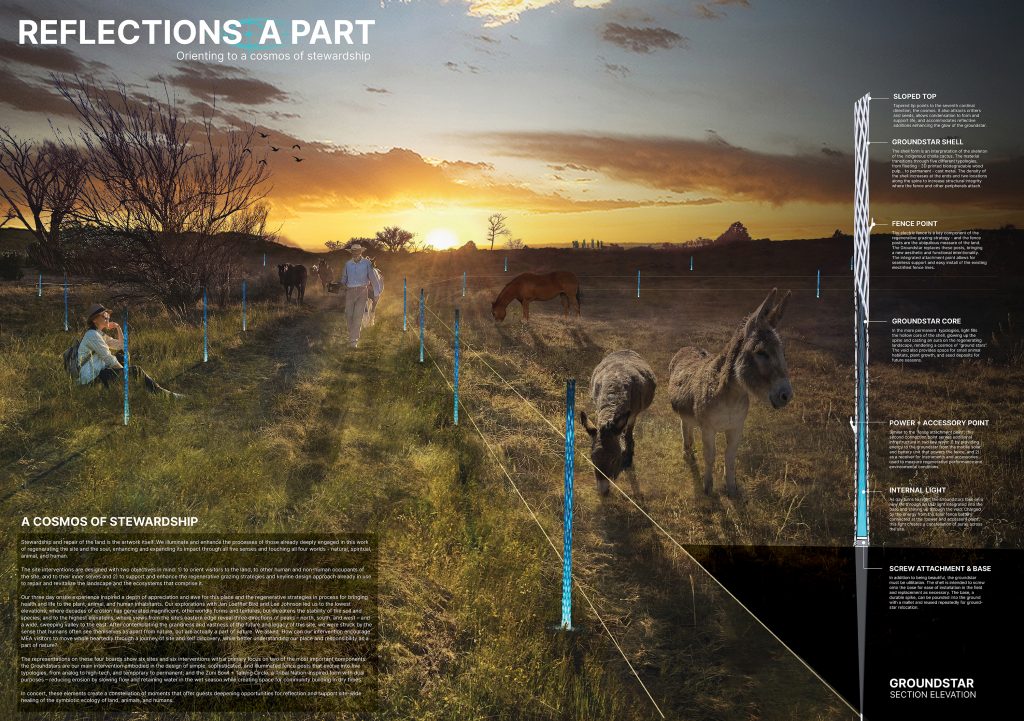
Jan describes “Landscape function” is the ability of a place (down to the square meter) to contribute to the water cycle, support life and biodiversity, and be productive and a positive contributor to the needs of humanity. The goal is to increase landscape function and water is the cornerstone of that regenerative process.
There are two key metrics related to water and landscape function:
- The ability of the place to infiltrate and absorb water (inches per hour). This can be up to 8” per hour in a healthy landscape.
- The ability to retain or store water. This varies with soil types and can be increased with organic matter.
Presently, there is about 50% groundcover at Saddleback. The land has been degenerated through unsustainable grazing practices from before MEA purchased the property. MEA is targeting a goal of restoring the landscape to 95%+ of groundcover. The best way to do that at this site is with sustainable grazing practices and MEA is pursuing this strategy in concert with a Keyline Design approach.
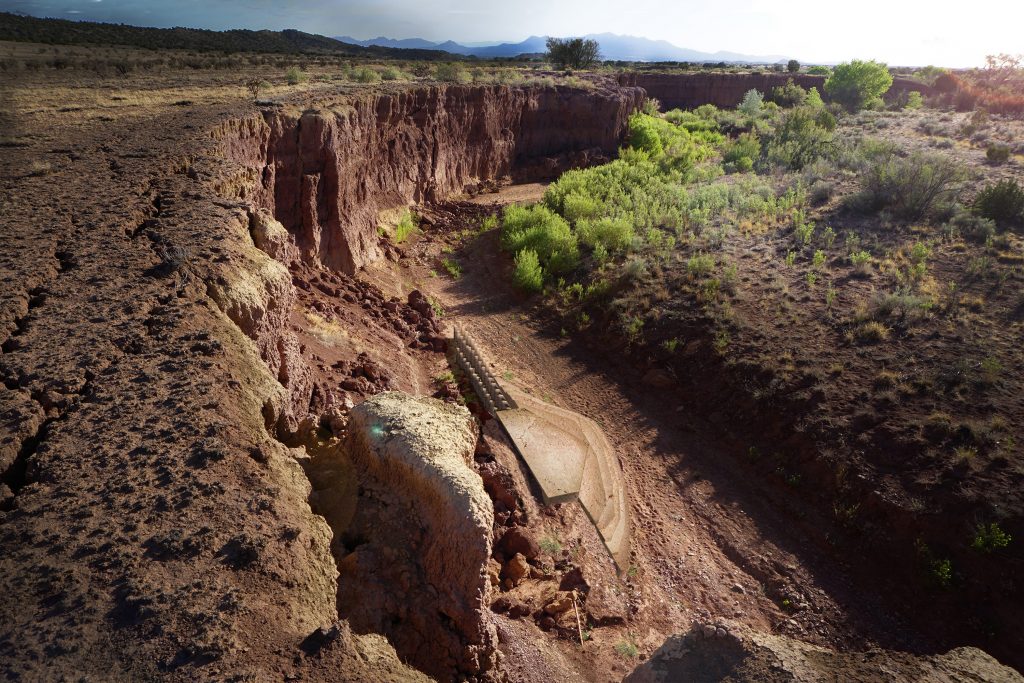
The chosen design from LAGI MEA, MEAnder, by Ryan Henel and Craig Sponholtz, proposes the use of induced meandering—a technique developed by Bill Zeedyk—to restore incised channels in the Galisteo Creek. Incision is a process by which a river cuts down into its bed, resulting in a deeper and more disconnected channel. This can be damaging to the ecosystem, as it reduces the ability of the river to support riparian vegetation and wildlife. Henel’s project proposes the use of in-stream structures called deflectors to redirect the flow of the river and speed the development of a new flood plain. The deflectors will be constructed out of adobe brick and compacted rock, and will be arranged in a step pattern to mimic the natural contours of the landscape.
The design of the sculptures considers the materials, textures, and forms found at the site, from the contours of the Keylined landscape to the structures of sedimentary rock on the riverbanks. This approach obscures the normally-distinct boundaries between a human-built structure and the forms found in nature, allowing the mind to wonder what it is seeing: Is the earthwork a unique geological landform or perhaps a ruin? Does the shape of a deflector reference a fossil of a sea creature that once lived in this place when it was an ocean floor? The work is designed not to be disruptive to the viewshed, but rather to be a part of the environment. This aesthetic integration is philosophically acknowledging that we are part of nature, that our work, our constructs are ultimately part of natural processes.

Meander Project will be installed in 2023 and we look forward to following the progress of the artwork and its regenerative effects over time on the groundcover of the banks of the arroyo.
You can learn more by exploring the design boards and written narrative.
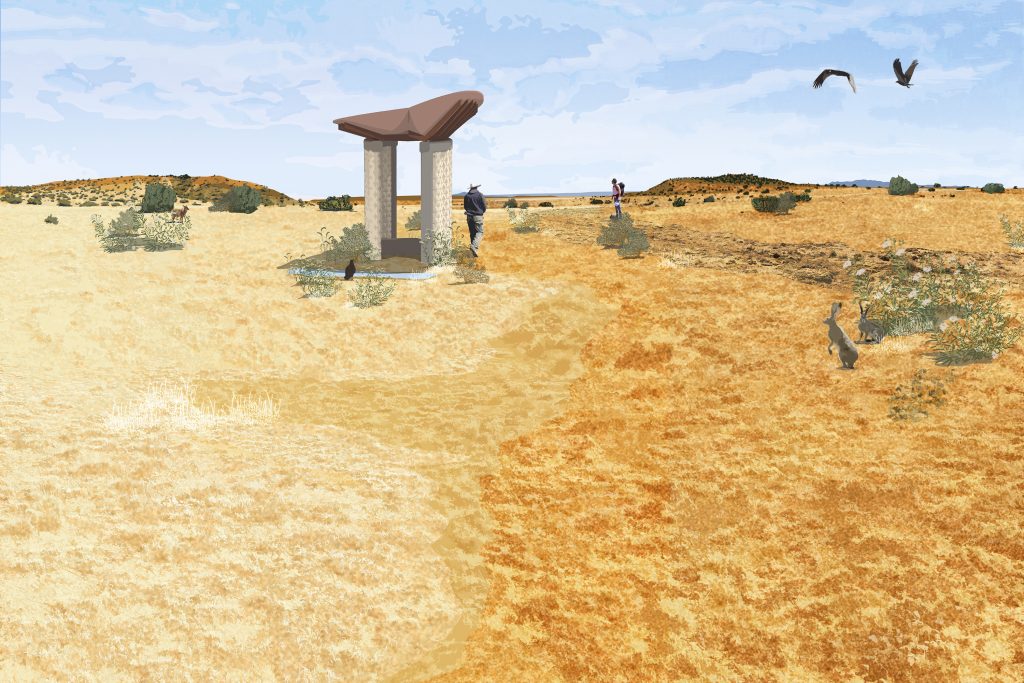
Olla Pods, by Catherine Harris and Charlie O’Geen, recalls the ancient technique of olla irrigation that involves burying clay pots near the roots of plants, allowing water to slowly seep out and provide moisture to the surrounding soil. This method uses less water than traditional irrigation methods and is well-suited to arid environments like New Mexico. Harris and O’Geen’s artwork proposes the creation of large-scale “olla pods” installed throughout the landscape. These pods are made out of recycled materials and a poured earth construction technique innovated by the artist team. Each of three installations feature native plants, providing habitat for wildlife, and help to restore the ecosystem.
Olla Pods is built with soil materials that come from the site to carve spaces for humans who are going through the life changing curriculum of MEA, to MEET one another in a larger setting, to BOND with one or two other participants, and then to REFLECT in a solitary manner on the journey of the week. The trilogy of experiences lies along a loop walk from the central point between the two MEA campuses, along the road tangent to the saddle for which Saddleback Ranch is named, and up into the highest prospect view of the entire campus, providing a contemplative experience of the landscape. MEET, BOND, and REFLECT meet the sky in a roof plane to collect solar power and water. The project redistributes these sky resources to the ground, to the plants, the animals, and the humans, providing a drinker at each site, sized to different animals’ needs, a seepage from each drinker provides water for native pollinator forbs and grasses, and a filter at each site allows humans to fill water bottles. The project seeks to provide MEET, BOND, and REFLECT experiences among human attendees of MEA, the non-human sentient beings, and the elemental forces of the New Mexico landscape.
You can learn more by exploring the design boards and written narrative.
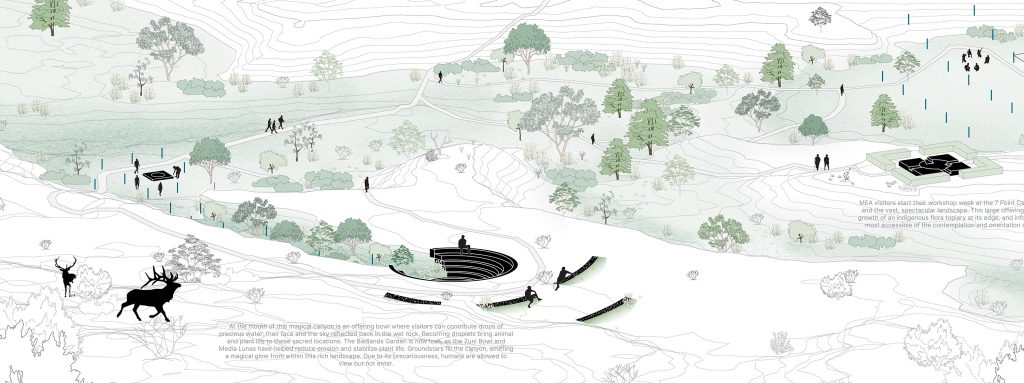
Reflections A Part by JUST Design and MIG Native Nation Building Studio is an invited entry to the LAGI-MEA design competition for MEA’s regenerative ranch, Saddleback, south of Santa Fe New Mexico. JUST team members include Quinlin Messenger, Linda Samuels, Kirstin Weeks (Bio Studio), Kaci Theros, and Andrew Tsuei; MIG Native Nation Building Studio team members include Jose Leal, Paul Fragua, Dennis Meyer, and Nate Willing. The artwork focuses on the theme of stewardship and repair of the land. The artwork seeks to highlight the processes of those who are already engaged in regenerating the site and its ecosystems. The site interventions are designed to orient visitors to the land, to other inhabitants of the site, and to their inner selves, as well as to support and enhance the regenerative grazing strategies and keyline design approach already in use at the site.

Visitors to Saddleback Ranch arrive through the front gate with the vastness and beauty of the expansive site and the legacy of ecological millenia before them. Through walking and observing the site, we identified six sites of interest where interventions occur that progressively orient the visitors to the site as it sits in the cosmos (in relation to sky, mountains, and culture), to the immediacy of the landforms and geology, to each other as part of a community, and ultimately to their inner selves.
The first site (the 7 Point Center) orients the visitors to the points and peaks of the Native American worlds – north, south, east, west, mother earth, father sky, and self. The second set of sites (the Groundstar Meadow, the Badlands Garden, and the Sonic Circle Aviary) orient the visitors to Saddleback’s unique landforms and plant and animal ecologies. The fifth site (Zuni Bowl + Talking Circle) changes functions depending on the season – rainy or dry – and speaks both to long-term ecological repair and to building stronger onsite communities. Finally, the sixth site (Vision Peak), the most remote and elevated location, is where the visitor looks both outward and inward and is re-oriented to the role of the self as part of – and inseparable from – the worlds, the ecologies, and the community. The concentric circle diagram is a reference to the expanding four levels of orientation, starting from the easiest-to-access 7 Point Circle and finally reaching the furthest and most difficult site, Vision Peak: orientation to worlds, orientation to site, orientation to ecologies, and orientation to self.
You can learn more by exploring the design boards and written narrative.
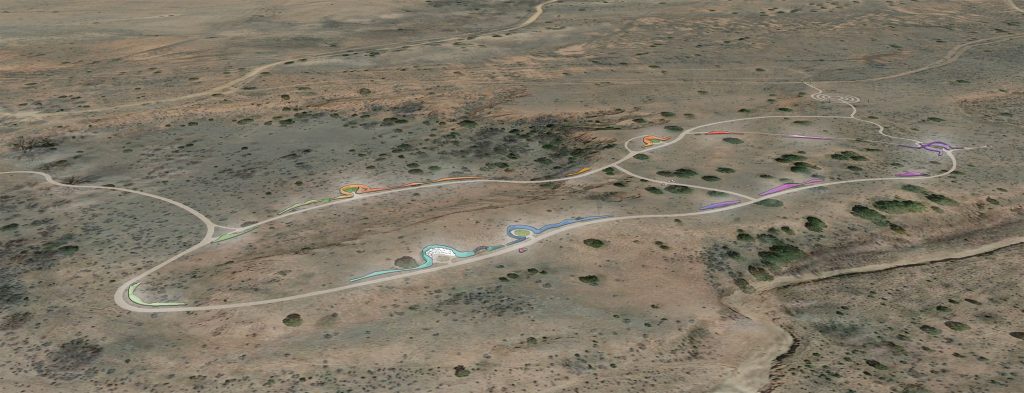
Ground Truth: Wayfinding Stories on and of the Landscape, by Andrea Polli, Ana MacArthur, Kristena Fox, and Richard Lowenberg aims to engage with people through a path-guiding serpentine form. The artwork takes the form of a winding, shape-shifting serpent that changes in form, size, and material as it extends over 3,500 feet from end to end. The serpent’s upper surface features a spinal trough that catches and directs rainwater to the Testbeds. Along the path, visitors will encounter Ground Truths, which are graphic texts, poetic phrases, and symbols that tell stories and ask questions about the site and its history. Additionally, the path features a labyrinth, an amphitheater, and a series of regenerative eco-art gardens, or Testbeds, that serve as small experimental gardens to better understand regenerative life processes. At night ultraviolet and blue spectrum illumination guides night walks and lights special events while engaging visitors more deeply with the creatures of the night and maintaining dark skies for stargazing.
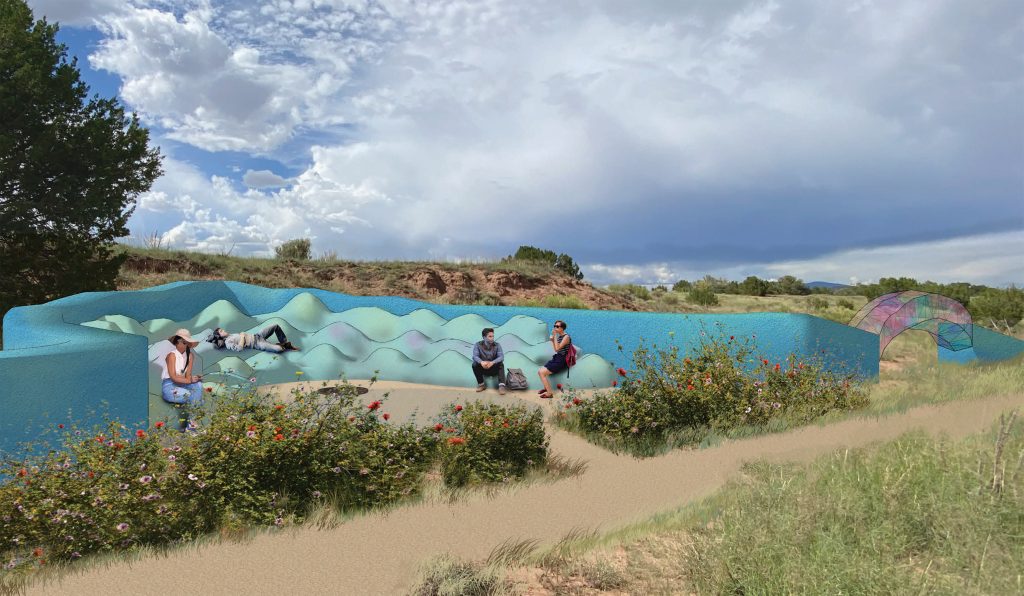
The Shape-Shifting Serpent shows the way, offering surprising and stimulating encounters along its path of wonder. The upper surface of the Serpentine form has a narrow indented spinal trough to catch and direct the flow of seasonal rainwater to the Testbeds. Testbeds are a series of regenerative eco-art (nested systems, living libraries, learning modules) gardens, to be encountered at sites along the serpentine way. Testbeds have the pragmatic purpose to serve as small experimental gardens, designed to better understand regenerative life processes and options, in ways that may be learned from and applied at larger scale on the ranch. They demonstrate relationships among a variety of plants, climate, water use, soils, light, energy, materials, pollinators, seasons and inter-relational life processes. Inspired by the velvety, chartreuse cushion Llaretas plants of the Atacama desert, large, unusually bulbous, colorful forms appear near and sometimes merge with the Serpentine form and Testbed sites. The Llaretas may be climbed and sat upon by one or more. Their surprising forms and spectral colorations mimic the undulating Amphitheater seating area and certain bulbous areas of the proximate Serpentine form.
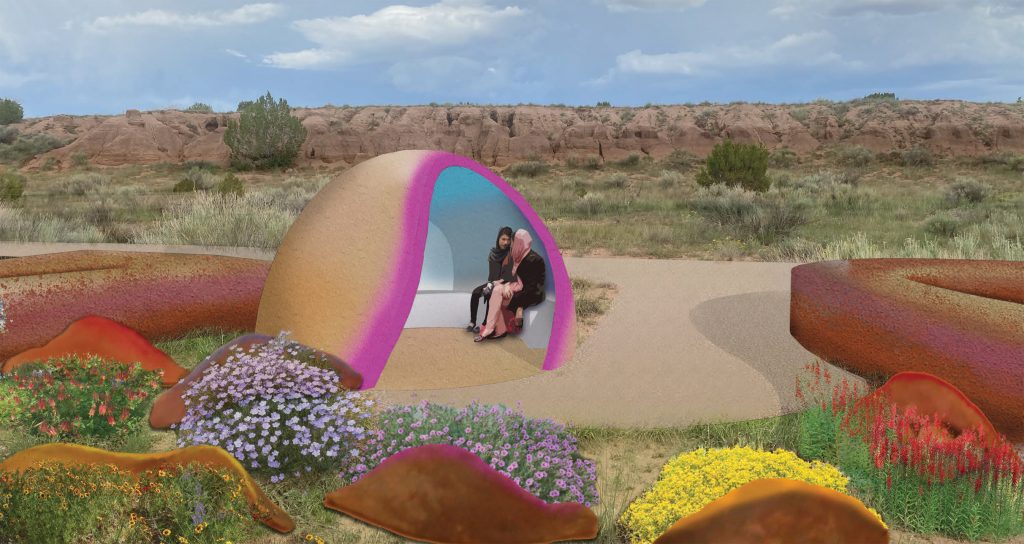
You can learn more by exploring the design boards and written narrative.
We’re delighted to be able to share the work of these four incredible teams with you and hope these artworks will provide inspiration for future regenerative landscape interventions. Follow this link to read the entire LAGI MEA design guidelines: LAGI MEA Design Guidelines.
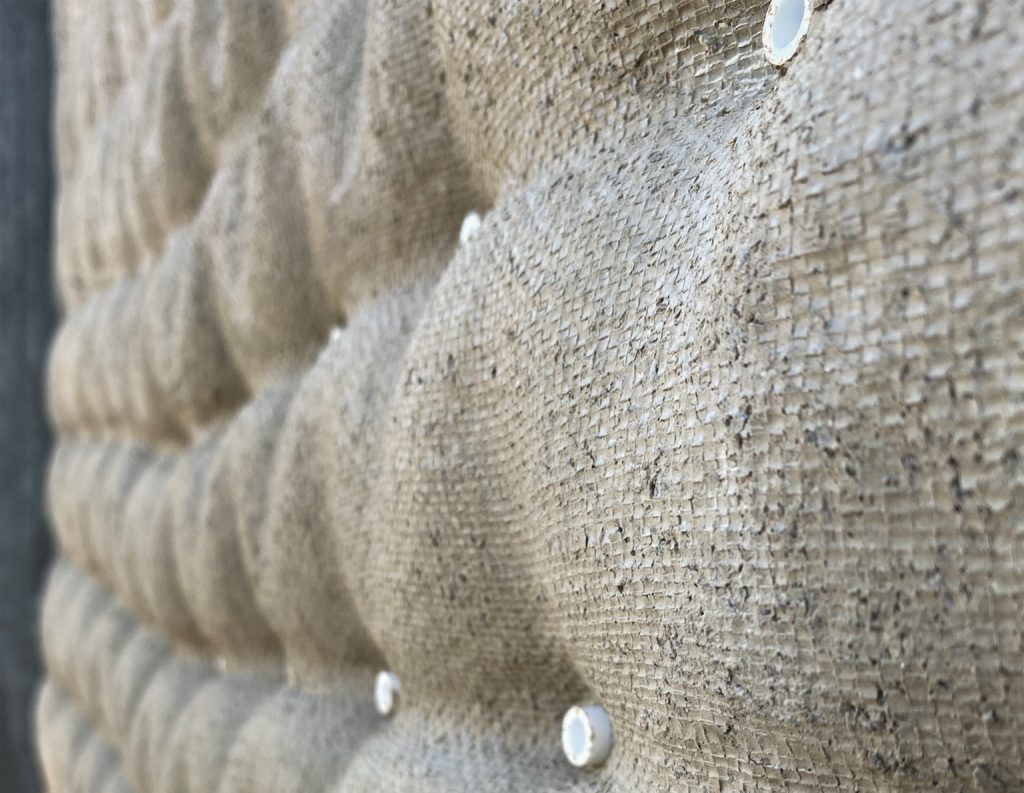
Related Posts
1 Comment
Add comment Cancel reply
This site uses Akismet to reduce spam. Learn how your comment data is processed.

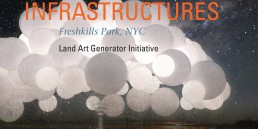
Simple things added to natural landscape enjance the space while the additions man congregates into the landscape say what man observes and how he mixes both of them with his mind.